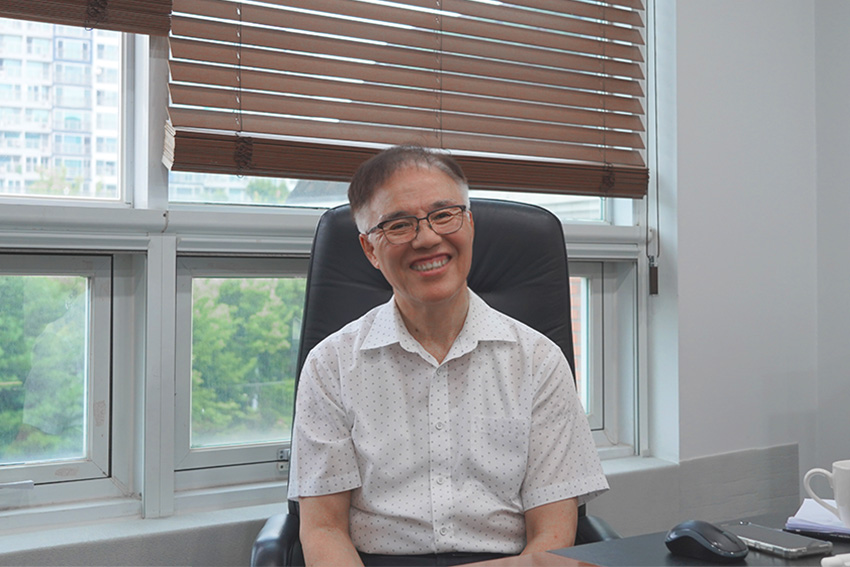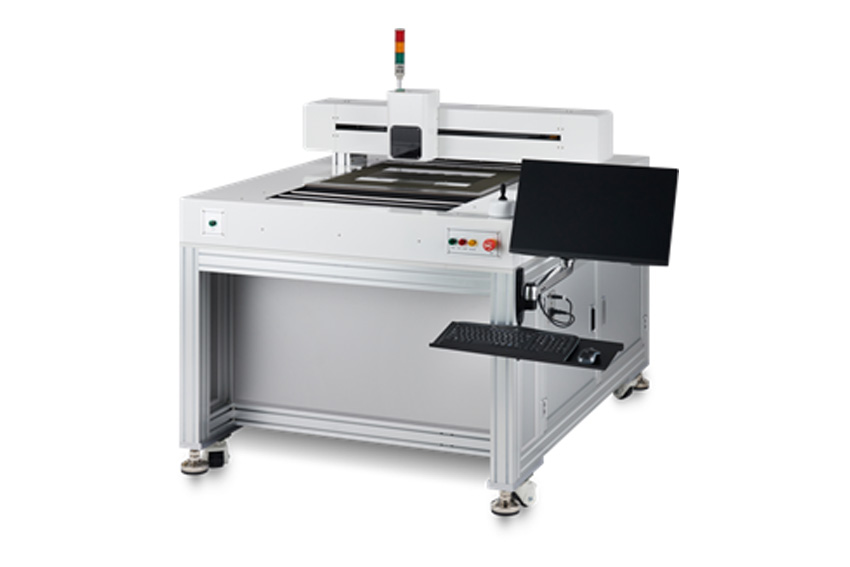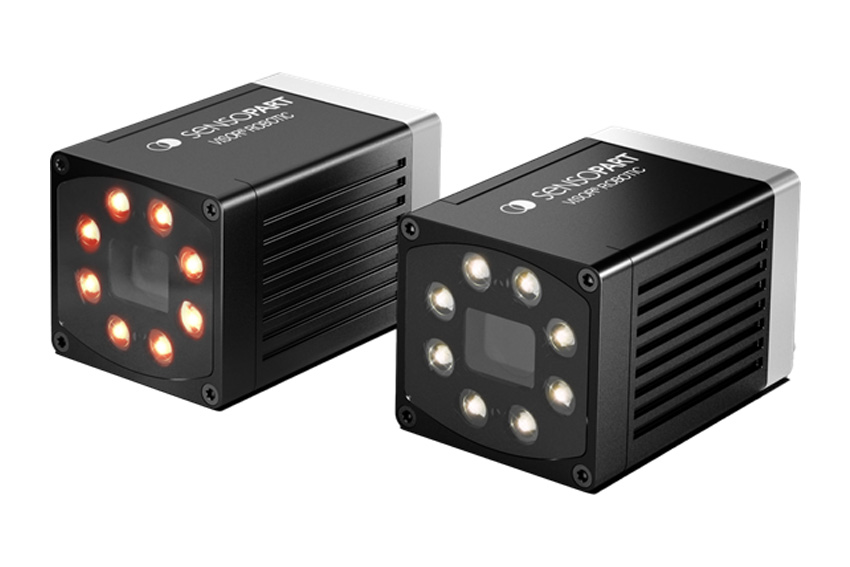KAIS is a leading engineering solution provider in South Korea through the implementation of world-class products, including high-end sensors, displacement sensors, and microscopes.

While supply chain disruptions have prompted international corporations to reconsider their global sourcing strategies and explore new supplier regions, this situation presents opportunities for SMEs in Korea. By implementing smarter management processes, automation systems, and digital and IoT technologies, Korean suppliers have demonstrated agility, enabling them to respond faster to customer demands by designing, developing, and producing customized products within shorter cycle times. From your perspective, how crucial is it for SMEs to establish a robust automation ecosystem to remain competitive?
There are several requirements for becoming one of the top global suppliers. First of all, you need to meet global standards, and your product has to be leading-edge. To achieve this, you need to have high-performance specifications as well as high-end features. In terms of quality, you must achieve a high level of uniformity. Additionally, you need to establish a high level of reliability with your customers.
To this end, I believe automation is no longer an option but a necessity because there are limitations to manual labor. Of course, you need to have the core technology to achieve a high level of performance, but quality, which is directly correlated with automation, is equally important. In the past, Japan spearheaded advancements in quality because they had more advanced systems to achieve high levels of quality. Now, Korea must swiftly catch up to become a significant part of the global supply chain. From our industrial expertise, we know that there are limitations to manual labor. Automation is required not only to achieve high performance but also to ensure uniform quality.
While inspections process is negatively affecting the yield by adding unproductive steps within the production, it is crucial to assure quality and performance. The development of frontier technologies, such as AI, IoT, Cloud computing and big data, is disturbing traditional processes and offer new possibilities. As example, now the implementation of AI within 2D or 3D batteries inspection systems can quickly and accurately detect misalignment without reducing yield. How are these technologies impacting the industry? How are Korean companies improving quality with the implementation of frontier technologies, including AI and cloud computing?
I think AI technology is ultimately assistive rather than a core technology itself. It is crucial because it can enhance quality without compromising yield. Automation is vital not only for production technology but also for the evaluation of technology. The technologies that will disrupt this industry will be those that elevate the speed and accuracy of AI, IoT, and deep learning. One of the critical aspects of AI and IoT is their ability to utilize massive data sets. For instance, you need to analyze data, perhaps up to 25,000 data points, in just a second. Those who can develop groundbreaking technologies to increase speed and accuracy will shape the future.
Speed and accuracy are important for the overall automation process, from sensing and decision-making to actuating. We need to prioritize achieving high speed and accuracy in all phases of sensing, decision-making, and actuating.
Established in 2012, KAIS is a leading engineering consulting company and solution provider of high-precision measurement systems, including sensors, vision systems, and measuring instruments. You achieved this by patenting sensor technologies and integrating their own software, collaborating with major companies such as Samsung and LG. Could you provide a brief overview of the company's history? What have been the key milestones in KAIS' history?
First and foremost, it's been only three years since I took office, so I can't provide a complete history of the company. Although you mentioned that we were established in 2012, that was actually when we incorporated under our current name. In fact, we were originally established in the early 2000s, making us a company with a 20-year history. At that time, there were no sensor manufacturers in Korea, and the automation industry was not as mature as it is now. The reason for the advent of automation lies in the era requiring precise and intricate processes beyond human senses, making automation essential. The semiconductor industry serves as a prime example of this trend.
The founder of this company previously worked for Keyence. He initiated the sensor business due to his experience at Keyence, which also operates in Korea. This led to our initial collaboration with Optex. We established a pipeline of various suppliers without needing to contact their branches or agencies directly. Developing this distribution channel was a turning point for our company and helped us secure a competitive edge.
Our founder's business philosophy emphasized direct sales to clients without involving agencies. Today, we have highly skilled sales engineers who continually provide solutions to our customers through direct sales.
We found your direct sales philosophy very interesting. It has enabled your firm to diversify across industries. While you have a long track record in electronics and secondary batteries, you are also present in the automotive, food, medical, and construction sectors. Looking at the future, which applications or sectors do you believe have the highest growth potential for your business? How are you able to flexibly respond to the demands of both semiconductor and construction companies, which have different standards, factory layouts, and domains?
There have been two groundbreaking changes in our sales strategy: first, the diversification of our clients, and second, the adoption of direct sales. It wasn't just us who pursued automation; the automation industry was developed by the semiconductor industry. Semiconductors opened the doors to automation processes, which have gradually expanded to display and other industries. Since automation is very costly, only those who understand its merits adopt it in their production assembly lines. However, differing standards among customers often created difficulties in product selection and usage. Our company has addressed this by leading customer diversification through customization tailored to their specific requirements. LG, Samsung, and other conglomerates were the first to start automation in semiconductors, then expanded it to displays, and now possibly to secondary batteries. Currently, our focus is on semiconductors and displays.
When we introduced direct sales, we trained our personnel by acquiring skills from individuals with the necessary references and expertise. This provided us with a unique opportunity to understand the demands of our clients in the semiconductor, display, and secondary battery markets more intimately.
Working with experienced sales engineers, KAIS goes beyond simply selling products and proposes automation solutions tailored to each situation. For example, KAIS has developed a customized thickness measurement platform using Micro-epsilon thickness Gauge confocal sensors, ensuring high accuracy and stability of measurement while maintaining high yield. Such solutions are essential in industries like batteries for cathode film measurement or displays for thin-glass measurement. Could you explain more about your system solution? How were you able to tailor packages for your customers? Could you give us the latest example of achievements?

One of the key milestones and main strategies we developed through our hands-on experience with direct sales is realizing that our role isn't just to sell components or sensors, which are relatively simple to use, but to help our customers integrate and apply them effectively to their products. This understanding led us to create simplified modules that are easier for our customers to use. Our hands-on experience through direct sales taught us the importance of providing comprehensive solutions, including not just components but also equipment and software programs, enabling our customers to effectively apply them to their product lines.
Even though our business size is currently small, we believe we are on the right track. There is an increasing demand from our clients for us to handle the integration and application of these components, which will increase our revenue and enhance client loyalty. For example, we had a client who needed to gauge the thickness of a thin film. We recommended the most reasonable sensors, including confocal sensors, customized to their specific needs. We also provided them with the necessary equipment and data communication services to process the data.
While I mentioned the example of thin film measurement, there are many other cases. This is why we decided to make our solutions modular and integrate them into equipment to suit their needs and add more value.
As I mentioned, we have a diversified client portfolio. However, major clients who specialize in confocal displacement sensors may compete in different markets. Therefore, whenever there are competent partners in our pipeline, we maintain contact with them. It has not been easy but we are committed to continuous improvement.
KAIS collaborates with more than 30 overseas partners in 12 countries, including Germany and Japan, to acquire best-in-class technologies. They have developed expertise working with companies such as Micro-epsilon, Sensopart, and OPTEX-FA. Could you provide an overview of your partnership strategy? Do you have specific types of partners you’re looking for? How will these partnerships help the growth of your company?
For sensors and components, both high accuracy and high performance, along with cost competitiveness, are crucial. Some partners may offer better performance at a reasonable price, while others may have lower prices but inferior performance. If there is a partner with a competitive edge that we lack, I am definitely willing to contact them. Of course, signing a deal can be challenging since we already have an established network, but I am open to reaching out to any competent partner.
Securing a competitive partner is challenging because it might upset our existing suppliers. We need to negotiate and persuade our current suppliers by explaining that complementing our offerings is essential, or we may need to secure an additional partner to fill any gaps.
When providing customized solutions to our clients, we first identify if there is a solution within our established pipeline. If not, we need to secure another partner, which is not always an easy task. We make the most use of our test lab here in Seongnam to ensure we can meet our clients' needs effectively.
You mentioned that you became president three years ago. Have you set a goal or objective that you would like to achieve during your tenure?
My primary goal is to grow the company in both sales and size. Internally, this might be something our workforce may not initially like, but my business philosophy is that for a company to grow, all aspects, from corporate culture to the operating system, work ethics, employee self-esteem, and support systems, need to evolve. It will take time and effort to elevate our company to new heights, but I believe these changes are necessary for us to grow from a company earning 20 billion KRW to 30-50 billion KRW.
On a personal note, I earned my PhD and then worked at SK Group in their research lab. I then became the head of a business division for seven years, followed by ten years as a professor at Soonchunhyang University. After my retirement, I joined this company. Although our workforce is not comprised of employees from Korea's best men, I believe that if we all work together, we can grow the company significantly.
The founder sold this company four years ago. For the last 16-17 years, he ran the company his own way, focusing on recruiting only new graduates rather than experienced professionals. This created an organization with a unified mindset. After the private fund acquired the company and I took office three years ago, I realized that the employees did not have familiar experiences with how conglomerates operate. I believe that our company's growth potential should not rely solely on individual capabilities but on a strong corporate culture and operating system. Our company can thrive if our employees are supported and able to realize their potential. I aim to establish this foundation during my tenure.

If we succeed with these strategies and lay a strong foundation, our company has the potential to grow exponentially. Although we are currently focused on the semiconductor, display, and secondary battery markets, which have been somewhat stagnant since the first quarter of this year, I am confident these industries will rebound next year. Additionally, we are eyeing the automotive industry, where there are opportunities in areas like detecting contamination or defects in painting that are not visible to the naked eye. While there may be opposition from labor unions, we need to find a way to introduce automation processes in these areas. This will make us more appealing to the automotive industry. Another aspect of introducing automation is reducing human errors by replacing 3D vision errors with sensors. As one example, let me briefly introduce our VISOR Robotics. This product is a powerful 2.5D vision robot guidance system that provides 3D axis alignment at a reasonable price through direct communication with robots and unique hand-eye calibration.
Although our revenue is not yet substantial, we aim to secure projects within this year and focus on the automotive industry. When we are ready for growth with new work ethics, systems, and support, I am confident that our sales strategy and market conditions will support our further growth.
For more details, explore their website at: https://www.ekais.kr/
0 COMMENTS